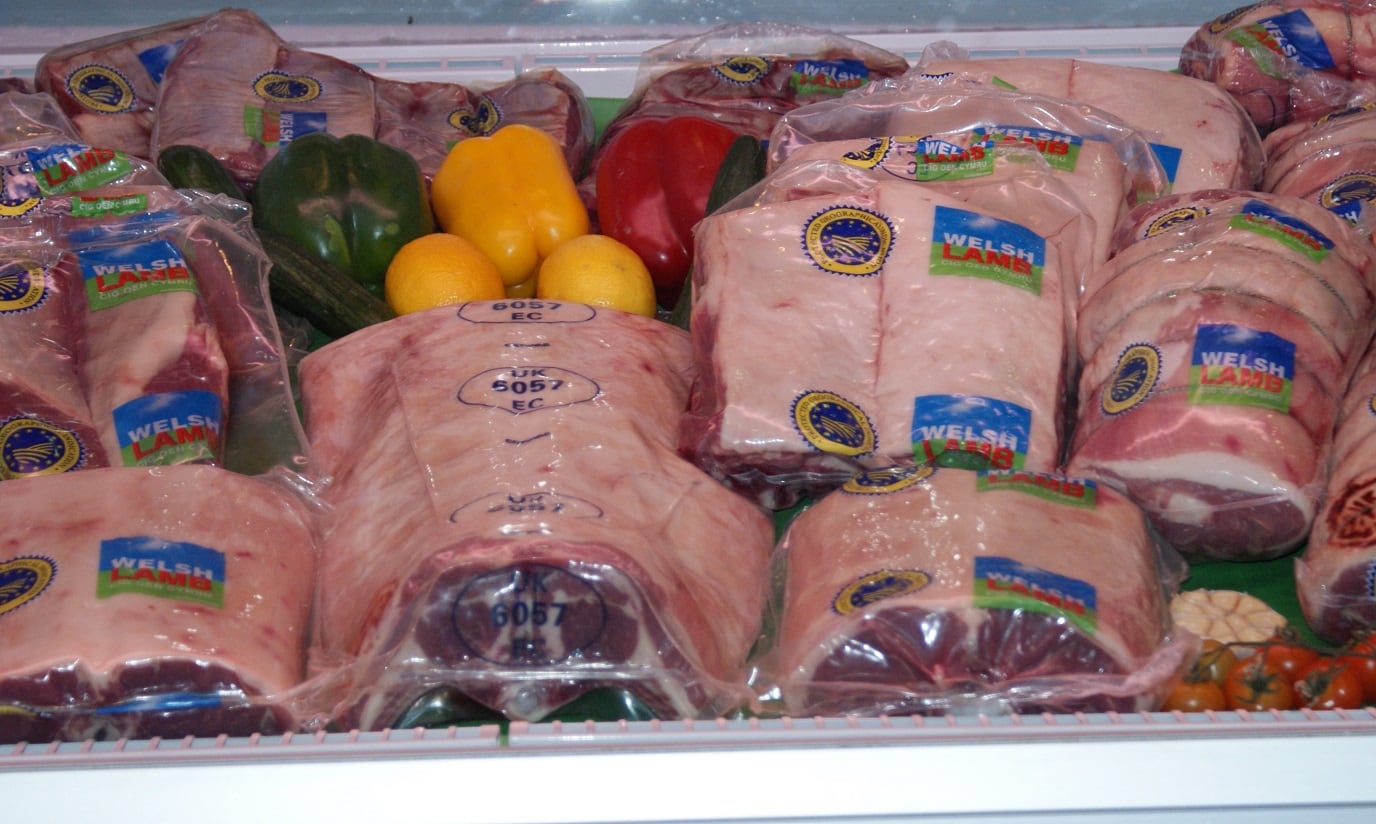Previously, shelf-life figures ranged from 21-28 days, but figures collated from Welsh processors have confirmed a 16% improvement over the year, to an average of 33 days.
Some overseas producers have pioneered extending the shelf-life of lamb in recent years. New Zealand lamb has set the standard, boasting 60 or more days of shelf-life for vacuum-packed chilled lamb and up to 110 days for CO2 gas-flushed lamb. Emulating this improvement has been identified as a key factor in helping Welsh Lamb’s competitiveness in the domestic retail market, and in attracting new export customers.
Longer shelf-life would allow more cost-effective access to distant markets via sea freight, rather than air freight, extend the seasonal availability of PGI Welsh Lamb and reduce waste.
All stages of supply chain
In leading the industry towards these improvements, HCC has worked at all stages of the supply chain. This has included holding training courses for farmers on best practice in terms of livestock presentation, and working with processing companies on improvements at abattoirs, cutting plants and in transportation.
According to HCC, the condition in which livestock is presented to slaughter has the biggest impact on potential carcase contamination and therefore shelf-life. Other factors include maintaining a high level of cleanliness and good temperature control throughout storage and distribution to limit microbial activity.
Additional areas considered have included good hygienic design and practices in processing plants. Recommendations have included covering holding yards to keep animals dry and use of slatted floors to remove faeces and prevent stock lying in it.
Air flows should be carefully monitored and manipulated if necessary to avoid cross-contamination from particles passing from dirty to clean areas, HCC has advised.
A complete review of procedures should be made to identify where contamination could be occurring. Knives and hands should be sterilised regularly and the aim should be to keep hands off the carcase as much as possible. Pelt removal is a danger point for contaminating carcases and equipment should be well maintained and serviced. Vacuum sterilisation could be adopted particularly in the anal area following pelt removal, HCC has claimed.
Food scientists at a meeting of the Advisory Committee on the Microbiological Safety of Food on 30 January argued the shelf-life of fresh meat could be significantly extended with no threat to food safety.
Rhug Estate case study
Rhug Estate is an award-winning organic farm producing organic PGI Welsh Lamb among a range of other products. The estate comprises the main farm in Corwen, Denbighshire and Ty Mawr situated on the Gwynedd coast.

Rhug has a vast portfolio, with clients from Michelin-starred establishments such as ‘Belmond Le Manoir Aux Quat’Saisons’ and Marcus Wareing Restaurants in England, to buyers in export markets, including Hong Kong, Dubai and Singapore. PGI Welsh Lamb from Rhug also has an impressive extended shelf-life, which is crucial for competing in these distant export markets.
“I noticed that cleanliness at slaughter was a big focus in New Zealand 15 years ago when I visited as part of my HCC Scholarship”, said Gareth Jones, Rhug Estate, farm manager. “In New Zealand, farmers farm for the market, with the emphasis being on the end-product.”
“Cleanliness of lambs is vitally important for achieving an extended shelf-life. Lambs must be as clean as possible when slaughtered in order to minimise the potential bacterial count. There is a vast difference in the cleanliness of lambs that have been housed prior to transportation to the abattoir and those that are transported direct from field to abattoir.”
All of Rhug’s lambs are housed overnight before they are transported for slaughter. “They have access to water, but feed withdrawal is an important aspect for maintaining cleanliness”, said Jones.
Lambs are clipped as close as possible to slaughter when required by the abattoir, otherwise clipping is done depending on the cleanliness of the lambs, the weather and the method that was used to finish the lambs. “We always use sawdust as bedding during transportation to ensure the lambs are as clean as possible when they arrive at the abattoir.
“Until you start to sell the meat that you produce, you don’t realise the importance of shelf-life. For retail it’s absolutely essential.”
“Improving shelf-life has been an important strategic aim, and it’s pleasing to have taken a significant step forward,” said HCC chief executive Gwyn Howells. “The shelf-life figure varies somewhat between different cuts. Some products now have a shelf-life of significantly longer than a month, which is a great help in attracting new export customers and aids the industry in being able to achieve a consistent year-round supply to retailers in Britain.
“Since we started focusing on this area, many hundreds of farmers and agriculture students have attended our free courses on presenting livestock for slaughter. We’ve also worked hand-in-hand with Welsh processors, and are continuing this work through our Welsh Lamb Meat Quality project, which is part of the EU and Welsh Government funded Red Meat Development Programme.
“We’re determined to continue this momentum and achieve even better results in years to come.”
A range of resources outlining HCC’s research on this issue as well as guides to best practice in the supply chain are available on its website, at https://meatpromotion.wales/en/industry-resources/sheep-management/shelf-life


